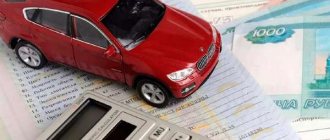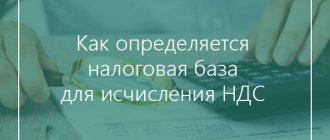What is property tax
You can learn everything about property tax in legislative language from the Tax Code (Chapter 32). This language is not familiar to all citizens of the Russian Federation, so we traditionally translate the article.
Property tax is the amount that the taxpayer pays to the regional budget for each property that he owns.
Taxpayers are individuals who own apartments, rooms, houses and other real estate. The more objects the owner owns, the greater the amount he will pay. The number of registered residents per square meter does not in any way affect the amount of contributions to the budget. It is not the one who lives who pays, but the one who owns.
The mechanism for calculating property taxes has undergone major changes in recent years. Until 2014, the basis, i.e., the starting point in determining the amount to be paid, was the inventory value of the object. It was determined by BTI workers. And it was far from real prices on the market. For example, an apartment worth more than 2 million rubles. could have an inventory value of only 100–200 thousand rubles.
It turns out that the owner paid property tax not on 2 million rubles, but only on 200 thousand rubles. What kind of state would tolerate this? It did not suffer. Since 2015, the order has changed. Now the amount payable to the budget is calculated not from the inventory value, but from the cadastral value, which ideally should be close to the market value.
But it was not possible to immediately switch to the new methodology, because there was not complete information on the cadastral value of all real estate objects in the regions of the Russian Federation. We created a transition period so that everyone could prepare, including taxpayers, whose property taxes were objectively expected to increase.
In 2021, adaptation ended. From this year, the tax is calculated only from the cadastral value. An exception was made for the city of Sevastopol, for them - from 2021.
To prevent the transition from being abrupt and people not looking at their pay slips in horror, they came up with transition coefficients - from 0.2 to 0.6 for the first three years of paying taxes in a new way. Next I will talk about them in more detail.
Main types of taxes, procedure for determining their amounts
1. Main types of federal taxes:
- Personal income tax. According to the Tax Code of the Russian Federation, the tax rate for personal income tax is calculated as a percentage of the object of taxation and is 13% (for Russian citizens). As for persons who do not have the status of a citizen of the Russian Federation, a thirty percent tax rate for personal income tax is established for them. Payment of personal income tax is provided for all types of income that an individual receives (salary, sale of real estate, performance of work, provision of services);
- VAT. The tax rate for VAT, in accordance with the Tax Code of the Russian Federation, as well as personal income tax, is calculated as a percentage; in the territory of the Russian Federation it is equal to 18%. An exception is made for organizations operating under the simplified tax system, for which the tax liability in relation to VAT is set to zero;
- tax levy on enterprise profits. Income tax is calculated as a percentage and is applied primarily to representatives of large businesses.
- tax on proceeds under the simplified taxation system. As a rule, the simplified tax system is used by beginning entrepreneurs (representatives of small and medium-sized businesses), whose annual turnover does not exceed 60 million rubles. For such persons, zero VAT tax is provided.
2. Main types of local taxes:
- land tax. According to the law, the tax rate for land tax is regulated by municipal regulations and ranges from 0.3 to 1.5%. The amount of the established tax depends on the category of taxable land. Land categories are established by land legislation;
- tax on real estate of individuals. It is established by representatives of the municipal government, calculated as a percentage of the value of the property, as a rule, it is no more than 0.3%.
3.Main types of regional taxes:
- property tax for enterprises. This is a regional tax, which must be paid by organizations whose balance sheets include property, both movable and immovable;
- transport tax. This type of tax is regional; the tax rate for it is calculated based on data such as the year of manufacture of the vehicle, its capacity, engine power, etc.
Author of the article
Objects of taxation
An exhaustive list of real estate objects on which the owner must pay property tax is given in Article 401 of the Tax Code of the Russian Federation:
- residential building, including buildings that are located on the land of personal subsidiary plots, individual housing construction, vegetable gardening and horticulture (dachas, garden houses);
- apartment, room;
- garage, parking place;
- single real estate complex;
- unfinished construction project;
- other objects.
There is no need to pay anything for objects that are not subject to state registration, as well as for the property of an apartment building that is classified as a common building (elevators, staircases, etc.).
After reading, you will understand how to stop working for pennies at a job you don’t like and start LIVING truly freely and with pleasure!
If the object belongs to several owners, then each pays in proportion to their share. And parents, guardians and other legal representatives pay for children, property owners.
Other situations
When carrying out transportation within the territory of the Russian Federation of luggage, passengers, cargo luggage, cargo or mail by road, rail, sea, air or river transport (except for suburban transportation of passengers at the same tariffs with the provision of various travel benefits, which are approved in the prescribed manner), the tax base is determined by , as the cost of transportation (excluding VAT and sales tax). When carrying out air transportation, the borders of the territory of the Russian Federation are determined by the final and starting points of the flight. When selling travel documents at preferential rates, the tax base is calculated taking into account these preferential rates. The above provisions apply taking into account transportation services subject to VAT at a rate of 0%, and do not apply to passenger transportation services that are not subject to VAT (exempt from VAT) and transportation provided for by international agreements (treaties).
The tax base for the sale of international communication services is determined. as revenue without including VAT and sales tax), which is received by a communications organization from the sale of these services, which is reduced by amounts that are transferred to: international communications organizations, foreign communications administrations, foreign organizations that are recognized as private operating organizations, due to payment of rent international communication channels and payment for international postal services; as contributions to international communications organizations of which the Russian Federation is a member; other communications organizations when international communications services are provided with them. communication organizations. The tax base for the implementation of the enterprise as a whole as a property complex is determined separately for each type of asset of the enterprise. In a situation where the price at which an enterprise is sold is less than the book value of the property sold, an adjustment factor is applied for tax purposes, which is calculated as the ratio of the sales price of the enterprise to the book value of this property. In a situation where the price at which an enterprise is sold is greater than the book value of the property sold, an adjustment factor is applied for tax purposes, which is calculated as the ratio of the sales price of the enterprise, which is reduced by the book value of receivables (and by the value of securities when no decision was made on their revaluation), to the book value of the sold property, which is reduced by the book value of receivables (and by the value of securities when no decision was made on their revaluation). Otherwise, the adjustment factor to the amount of receivables (and the value of securities) is not used.
We hope that we have given the most complete definition and concept of the term tax base, revealed its structure, principles and functions
How to determine the tax base
From January 1, 2020, the tax base is the cadastral value of the property. It is calculated in all regions of the Russian Federation.
Let's look at ways to find out the cadastral value of your property.
- Rosreestr website
Simply fill out the online application and receive all the necessary information.
- Taxpayer’s personal account on the Federal Tax Service website
The “My Property” section contains all the objects that you own. You can immediately see the cadastral number on the card. For example, if you want to make a request on the Rosreestr website, you will need it. And if you click on the property with the mouse, you will be taken to the description, where the cadastral value is located.
- Calculator on the Federal Tax Service website
The information is filled in sequentially. After entering the cadastral number, the value of the object is displayed. In my case, it’s still the same 1,816,986.38 rubles.
- Public cadastral map
There are no apartments on the map, only land plots and residential buildings.
- Tax receipt
If you do not have a personal account on the Federal Tax Service website or you have written a statement about your desire to receive notifications in paper form by mail, then the receipt sent in previous years contains the cadastral value.
The final value of the tax base is influenced by benefits: federal and local. There will be a separate section about them in the article.
New in legislation
Let's consider how the tax base is formed in this segment, based on the legal mechanisms currently operating in Moscow. The fact is that the capital's legislators have already approved norms that, according to many experts, can significantly modify the process of calculating and collecting property taxes.
From 2015, owners of Moscow real estate will pay fees based on the cadastral price of apartments (while before amendments to the laws, the tax base was calculated on the basis of inventory value). The basic tax rate that will be charged in the capital is 0.1%. In addition, individual Moscow prefectures will have the opportunity to use an increasing factor of 3 units. It is expected that its practical use will depend on the value of real estate. For example, if this is an apartment whose price does not exceed 10 million, then you will have to pay at a rate of 0.1%. But if this is, for example, an elite house worth more than 50 million, then the rate can rise to that same 0.3%.
Tax rates
The Tax Code of the Russian Federation provides basic rates. Their final sizes are determined by regional authorities.
| Object type | Bid, % |
| A residential building and its part, an apartment and its part, a room, an object of unfinished construction, a single real estate complex and a residential building as part of it, a garage and a parking space, outbuildings. buildings and structures with an area of up to 50 square meters. m | 0,1 The rate can be reduced to 0 or increased, but not more than 0.3% |
| Objects worth more than 300 million rubles, real estate from clause 7 and para. 2 clause 10 art. 378.2 Tax Code of the Russian Federation | 2 |
| Other real estate | 0,5 |
All information about rates and benefits can be obtained from the link. I give an example for the city of Ivanovo, where I live. You just need to change the subject to see the latest information for your region.
As you go through each tab, you'll learn rates, deductions, local and federal benefits. For example, in the city of Ivanovo there are no local benefits. And the rate for the category of objects, which includes apartments, houses, rooms, etc., varies from 0.1 to 0.3 depending on the value of the property.
Base for property fees
So, first the real estate industry. How is the tax base calculated if we are going to pay property tax? In accordance with current legislation, the inventory value of an apartment (as well as a dacha, garage and other types of buildings that belong to citizens by right of ownership) is taken as a basis. This information is located in the BTI structures at the place of registration of the property.
The tax base is equal to the inventory value minus shares in the ownership of real estate by other persons. The amount of the fee itself to be paid to the treasury is determined by multiplying the resulting figure by the tax rate, which, in turn, depends on the inventory value. If the BTI contains information that the property costs 300-500 thousand rubles, then a rate of 0.1% is applied. If 500 thousand or more, then 0.3%.
However, changes are actively taking place in the legislation (especially in the part that is responsible for such components as the rate and tax base) of the Russian Federation. At the federal and regional levels, legal acts are adopted that provide for the calculation of property fees based on other principles. Which ones?
Tax benefits
There are deductions for property taxes. The tax base is reduced by the cadastral value:
- 20 sq. m of apartment or part of a house;
- 10 sq. m of room or part of the apartment;
- 50 sq. m of residential building.
Example. Let's determine the tax base for a residential building with an area of 140 square meters. m and cost 3 million rubles:
- Cost of 1 sq. m = 3,000,000 / 140 sq. m = 21,428.57 rub.
- Tax deduction = 50 sq. m * 21,428.57 = 1,071,428.5 rub.
- Tax base = 3,000,000 – 1,071,428.5 = 1,928,571.5 rubles.
If a single real estate complex includes a residential building, then the tax base is reduced by 1 million rubles.
For large families (3 or more children), in addition to the deductions discussed above, the tax base is reduced by the cost of:
- 5 sq. m of apartment or part thereof, rooms for each child;
- 7 sq. m of residential building or part thereof for each child.
The Tax Code of the Russian Federation establishes federal benefits for various categories of citizens. They are mandatory for use throughout the Russian Federation. Local authorities can supplement them with their own. Some regions are limited to federal benefits only.
The list of citizens who have the right not to pay property tax at all or to pay it in a smaller amount is impressive. You can view it in Article 407 of the Tax Code of the Russian Federation. Among the beneficiaries are heroes of the Soviet Union and the Russian Federation, disabled people, pensioners, people who own premises for carrying out creative activities or owners of outbuildings with an area of less than 50 square meters. m.
Rules for receiving benefits:
- Permissible only for objects that are not used for business activities.
- All objects are divided into 5 categories. A taxpayer can select only one property from each category to receive the benefit.
- Benefits are of a declarative nature, i.e. the taxpayer must submit an application to the Federal Tax Service. If there are several properties owned, then the owner must choose the one for which he wants to reduce taxation. The decision can be changed every year until December 31 of the reporting period.
- If the beneficiary has not chosen an object for preferential taxation, the tax office will exempt the one with the highest cadastral value from paying tax.
- There is no need to attach documents confirming your right to benefits with your application. From January 1, 2018, the Federal Tax Service itself requests and verifies the necessary information from the relevant authorities.
- Real estate worth more than 300 million rubles. is not exempt from paying property tax.
Example . The pensioner owns two apartments and a garage. He is entitled to a 100% property tax exemption. The properties belong to different categories of real estate, so a pensioner may not pay for one of the apartments and a garage. He chooses an apartment for preferential taxation himself, or the Federal Tax Service does it for him.
Procedure for paying tax at a progressive rate
The tax agent withholds personal income tax when paying income to an individual and, as before, transfers it to the budget at his place of registration (place of residence) or at the location of a separate division. In this case, it will matter whether or not the amount of tax, calculated on an accrual basis from the beginning of the tax period, exceeds the threshold of 650,000 rubles.
If at the time of payment of personal income tax to the budget the threshold is not exceeded, then the tax agent transfers the amount without any special features. And if the tax turns out to be higher, then you must pay separately:
- tax in the part that is less than or equal to 650 thousand rubles;
- tax, the amount of which exceeds 650 thousand rubles. and which refers to part of the base over 5 million rubles.
For other rates, the tax agent calculates and transfers the tax without any special features.
For the new rules for transferring personal income tax, new BCCs have been introduced.
Transitional provisions
In 2021 and 2022, the new progressive personal income tax rate will be applied to each tax base separately.
In addition, it is provided: if the tax agent makes a mistake in calculating the tax at the combined rate (650,000 rubles + 15% of excess income of 5 million rubles), then for the first quarter of 2021 he will not be fined or charged penalties. To do this, the tax agent must independently transfer the missing amounts to the budget before July 1 of the next year.
The article was written and posted on November 19, 2021. Added -
In preparing the article, materials from SPS “Consultant Plus” were used.
ATTENTION!
Copying the article without providing a direct link is prohibited. Changes to the article are possible only with the permission of the author.
Terms and methods of payment
The deadline for paying property tax is December 1 of the year following the reporting year. For example, until December 1, 2021, property owners pay for 2021. And for 2021 – until December 1, 2021.
Every year, the tax authority sends out a notice to each taxpayer with all the necessary information on the object, amount and timing of payment. If you have a personal account on the Federal Tax Service website, the document will go there. If not, then by Russian post.
Payment methods:
- Online on the website of the Federal Tax Service of Russia through the “Payment of taxes and duties” service.
- Online through your personal account immediately after receiving the notification.
- At the bank with a receipt. The notification already contains a receipt; you just need to take it to the bank and pay the required amount in cash or by card.
- Through the State Services portal (Payment tab).
Principles and functions of taxation
The tax base is the main element of the tax, which is a numerical expression of the object of taxation and the basis for calculating the amount of tax.
The tax base is a numerical expression of the object of taxation and is the basis for calculating the amount of the tax salary (tax), since the tax rate is applied to it.
The tax base is a specific object on which tax is levied, for example, the income of an individual as an object of income tax, the estate of the deceased as an object of inheritance tax, the profit of a company as an object of corporation tax.
The tax base is the value of assets or income on which taxes are calculated. Tax base is the amount from which tax is calculated at the established rate.
Tax calculation methods
Tax fees can be calculated using several methods. The most popular and at the same time simple method involves taxation of the tax base in parts - the non-cumulative method. In other words, each payment by an organization to an individual is taxed separately, without taking into account previously received funds. This method is characterized by the fact that keeping records of the taxpayer’s income and benefits is not required. However, the non-cumulative method does not ensure the uniformity of the flow of funds into the budget.
The cumulative method, the essence of which is that tax deductions are calculated on an accrual basis, has also gained good popularity. Its function is to determine the amount of income and the total amount of benefits received on a particular date of the year.
Expenses taken into account when calculating income tax
Expenses that are taken into account when calculating income tax are recognized only as justified expenses of the taxpayer, that is, economically justified expenses. Expenses are also various types of expenses that were aimed at implementing activities that generate income.
Article 252 of the Tax Code distinguishes two groups of expenses:
- Costs aimed at production and sales. This includes material costs, labor costs, the amount of accrued depreciation and others;
- Non-operating expenses - costs associated with banking services, financial losses from fires, accidents, natural disasters, etc.






